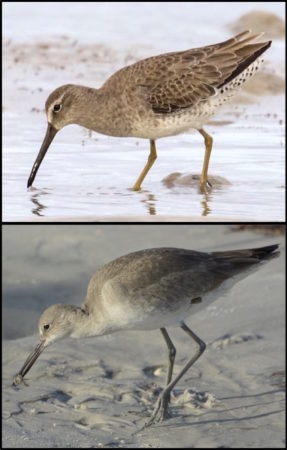
I recently attended BirdsCaribbean’s week-long Caribbean Birding Trail Interpretive Guide Training Workshop on Union Island in St. Vincent & the Grenadines. I learned many things, including bird identification, guiding techniques and the importance of conveying a message on your tour. One of the highlights of the training for me, however, was learning to identify shorebirds.
Most shorebirds have long, skinny legs and long bills, allowing them to wade and feed on insects and other food in the shallow water and mud. Their long, pointed wings help them to fly quickly over long distances—many migrate each year from the Arctic to South America and the Caribbean. As an amateur birder, I am fascinated by the variety, similarities and subtle differences that exist between shorebirds.
During the training, we had the opportunity to visit Ashton Lagoon, Belmont Salt Pond and Richmond Bay on Union island, as well as the Salt Pond on the island of Mayreau. We observed a large variety of birds including plovers, turnstones, sandpipers, dowitchers, yellowlegs and Whimbrel and American Oystercatcher. The Willet, which belongs to the sandpiper family, and the Short Billed-Dowitcher initially posed the largest challenge for me to tell apart.
At first glance through my binoculars, I recognized the Willet as large and stocky with long legs and a thick, straight bill. The Short-billed Dowitcher bears a striking resemblance but is speckled which gives the appearance of nutmeg sprinkled along its back. The Short-billed Dowitcher also has a distinctive football-shaped tummy. Time and again, I had trouble with the ID. Once the Willet took flight, however, the black and white stripe along its wings became easily discernible and all confusion vanished from my mind!
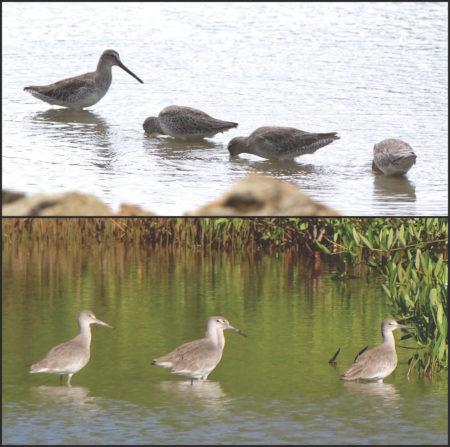
The facilitators were very knowledge, insightful, and patient with the participants. They were willing to share and there were many opportunities to ask questions during coaching sessions in the field, as well as birding quizzes in the classroom. They motivated us by explaining that it was normal to make identification errors in the early stages of birding. They then highlighted subtle tricks that can be used to distinguish similar species such as the call, the way the bird moves, size and shape of the bill, and color patterns in the plumage.
As one of the leading nature-based personalized tour operators on the Island of Carriacou, I found immense value in this training workshop. My certification as a Caribbean Birding Trail Interpretive Guide provides me with a unique selling point and will significantly improve my ability to provide my guests with biologically and ecologically sound information on the birds we encounter.
Despite my significant improvement in shorebird identification, my biggest “take home” is the fact that I am a novice birder – and that I should not be afraid to tell a client that I cannot identify a bird we may encounter. I may be accompanying a very accomplished bird watcher, who would be able to identify the species and provide me the opportunity to learn from their experience. We can learn so much from each other—I am looking forward to this!
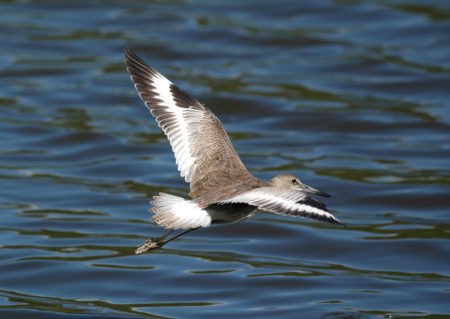
By Allison Caton. Allison is the Managing Director of Isle of Reef Tours in Carriacou, Grenada. She has worked as a guide for 4 years. Allison was one of 24 participants in BirdsCaribbean’s Caribbean Birding Trail Guide Training Workshop, held in Union Island, St. Vincent and the Grenadines, May 27 to June 1, 2018. The workshop was hosted and organized locally by Sustainable Grenadines Inc. Workshop topics were related to building a sustainable tourism market focused on birds, nature, and heritage, including bird identification and guiding, environmental interpretation, and marketing. With the training she has received, Allison is excited to start offering bird watching tours to her customers.
Editor’s Note
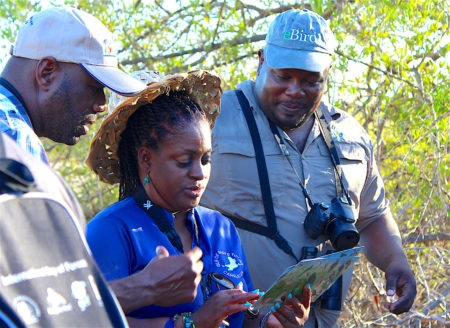
We thank Environmental Protection in the Caribbean (EPIC) for sponsoring Allison’s participation in the workshop. EPIC notes the need for bird guides in the Grenadines: “The remote islands of the Grenadines archipelago are home to thousands of breeding seabirds, with some islands classified are regional or global Important Bird Areas. Unfortunately, these nesting sites suffer from poaching, introduced predators, and other threats. That’s where the Grenadines Volunteer Patrol comes in. This group of fishers, tour guides, and concerned citizens conducts seabird surveys to monitor populations and advocates on behalf of these crucial nesting areas.
One repeated request we receive from trainees during our workshops is to learn how to be a bird guide. This year EPIC was able to sponsor Volunteer Patrol members to attend a 5-day Caribbean Birding Trail Interpretive Guide Training Program hosted by Sustainable Grenadines and BirdsCaribbean. Participant Allison Caton noted that “the facilitators were top notch and the information was delivered in a serious, yet fun way.” She and others can now integrate this crucial knowledge, whether they currently run tours or plan to start a new business. Either way, it’s a win-win for the birds and the people who benefit financially from bird conservation.”
A big thank you to all of the sponsors of this workshop for their funding and/or in-kind donations:
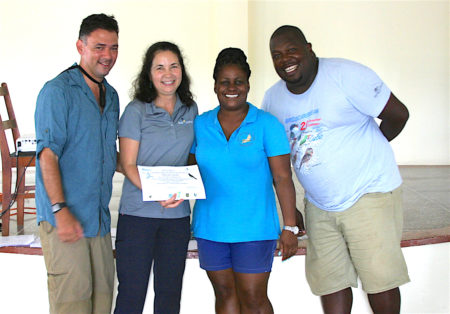
Marshall Reynolds Foundation
KfW German Development Bank through Caribbean Community Climate Change Centre (CCCCC)
US Forest Service, International Programs
Optics for the Tropics
Palm Island Resort
Ministry of Climate Resilience, the Environment, Forestry, Fisheries, Disaster Management and Information
Environmental Protection in the Caribbean (EPIC)
Ridge to Reef Project Grenada
Carefree Birding
Private donors
Kings Landing Hotel

To read more about this workshop, check out entertaining blog posts by 2 other participants: Natalya Lawrence and Lloyd Joseph. See more photos in an album on our Flickr page.
